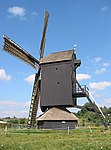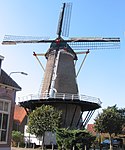Christelijke Hogeschool Ede

The Christelijke Hogeschool Ede (in English Christian University of Applied Sciences is added to the Dutch name; abbreviation remains CHE) is a Dutch vocational university, based in Ede in the central Netherlands. The CHE has a clear Christian basis: the Bible as norm and source of inspiration. The mission of Christelijke Hogeschool Ede consists of two pillars: developing and providing high quality professional education, through which students are formed as Christians, equipped and trained to be (starting) professionals and developing, sharing and applying knowledge, which is made available (commercially or non-profit) to a society with multiform worldviews. From 2004-2011 and in 2015, 2016 and 2017, the CHE was appointed for the eleventh time as the best university of applied sciences in the Netherlands.
Excerpt from the Wikipedia article Christelijke Hogeschool Ede (License: CC BY-SA 3.0, Authors, Images).Christelijke Hogeschool Ede
Oude Kerkweg, Ede
Geographical coordinates (GPS) Address Phone number Website External links Nearby Places Show on map
Geographical coordinates (GPS)
| Latitude | Longitude |
|---|---|
| N 52.019722222222 ° | E 5.6641666666667 ° |
Address
Christelijke Hogeschool Ede
Oude Kerkweg 100
6717 JS Ede
Gelderland, Netherlands
Open on Google Maps









